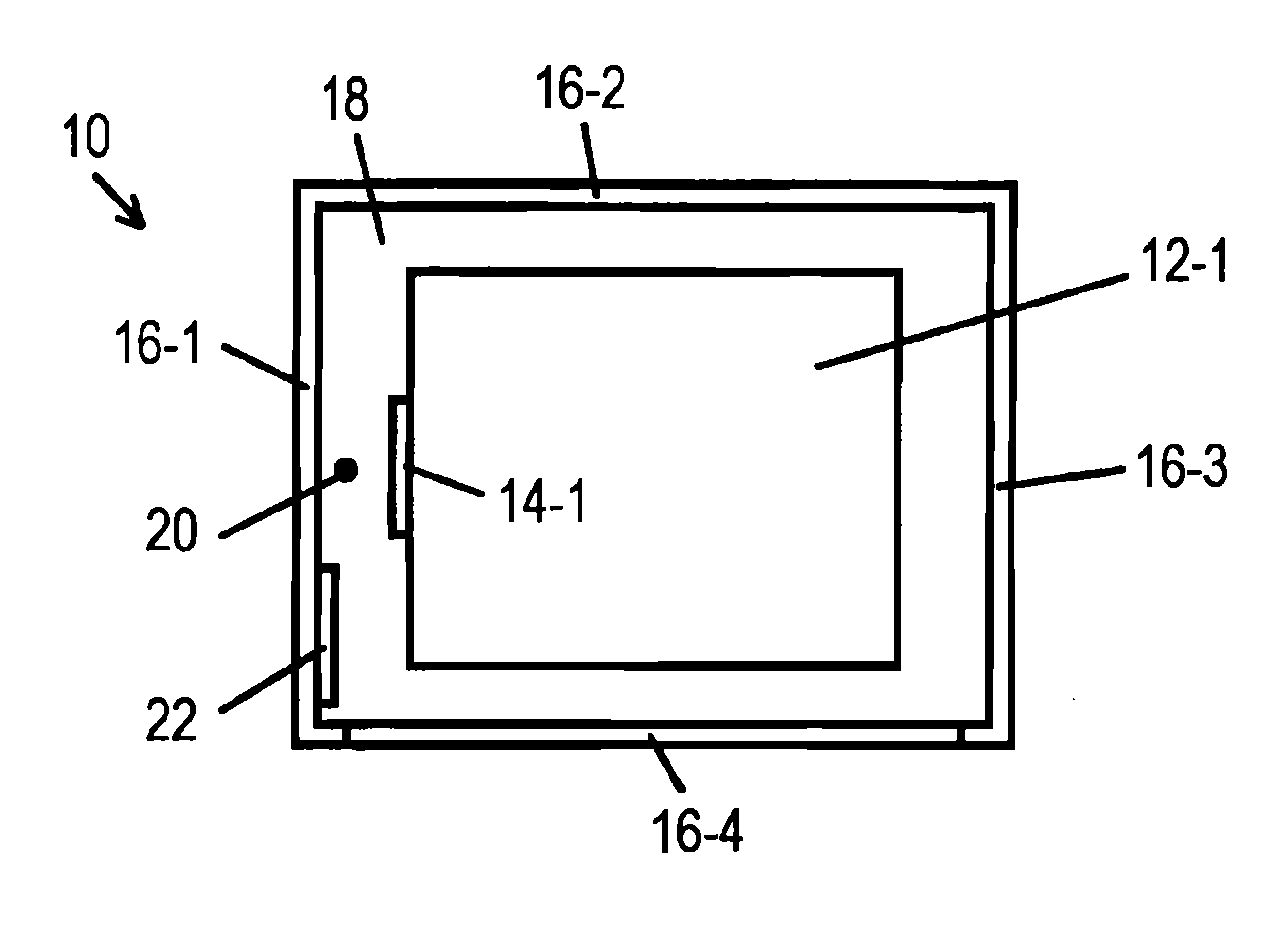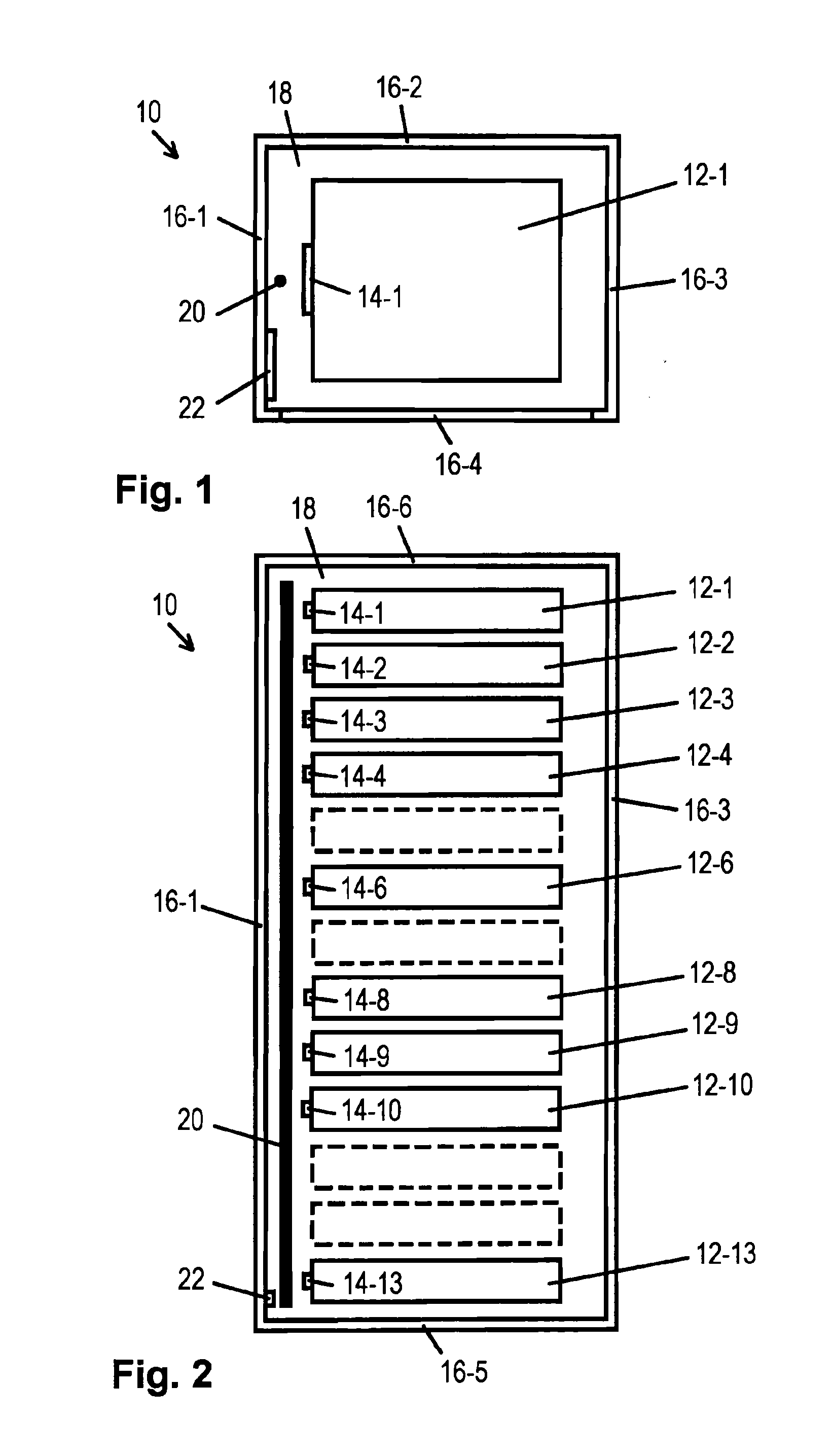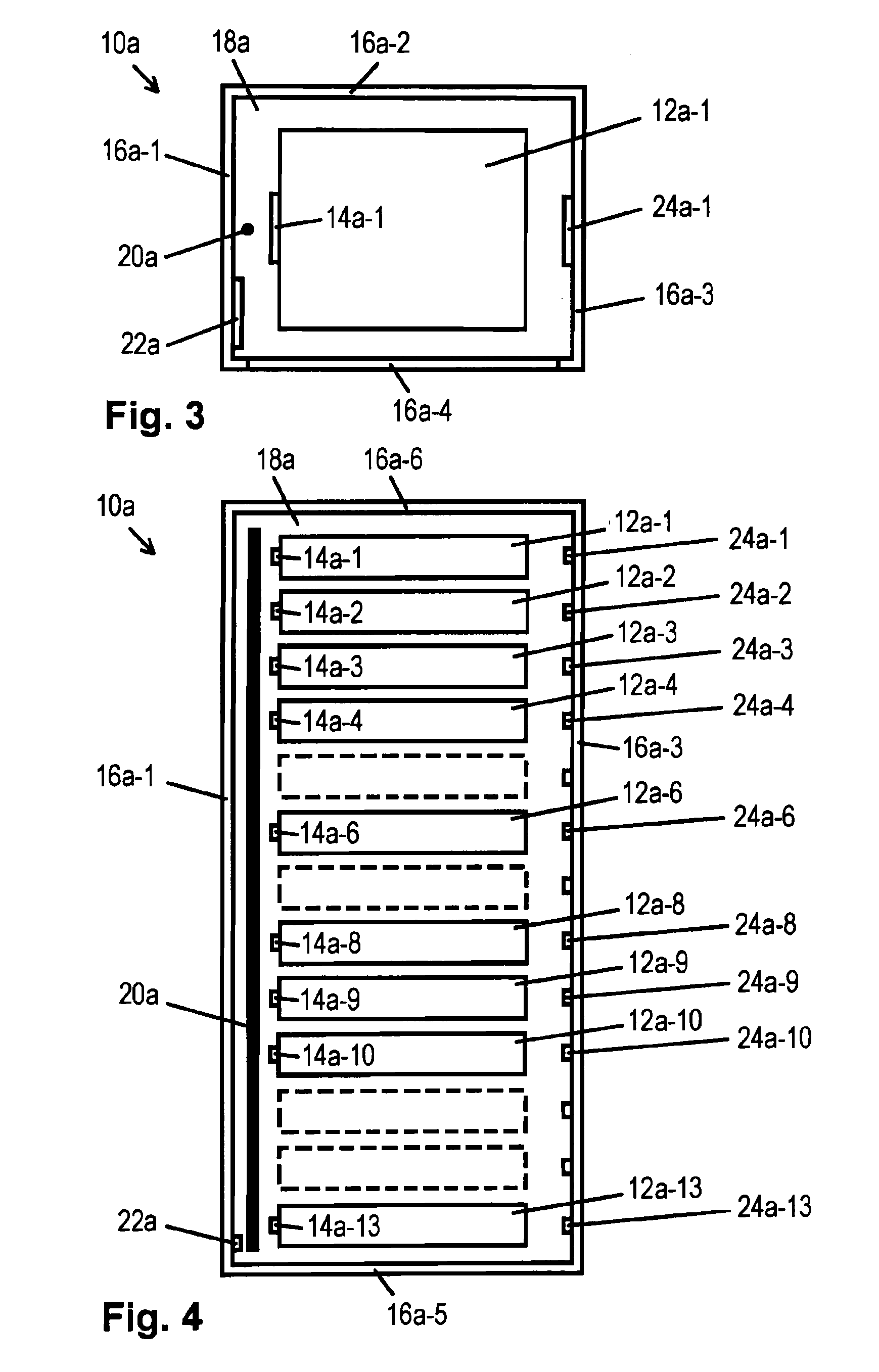Container for Receiving Articles
a container and article technology, applied in the field of containers for receiving articles, can solve the problems of inability to amend subsequently, low information memory capacity, and inability to readout or read off data, etc., and achieve the effect of easy and fast data readout and readout, and easy and fast data readout and reado
- Summary
- Abstract
- Description
- Claims
- Application Information
AI Technical Summary
Benefits of technology
Problems solved by technology
Method used
Image
Examples
Embodiment Construction
)
[0083]FIGS. 1 and 2 show a plan view of a front view of a container 10 in the form of a so-called “server rack” for accommodating articles 12-1 to 12-13 in the form of IT components (e.g. patch panels, blades, switches etc.).
[0084]The reference numerals of multiply provided components but having a similar effect such as, for example, the articles which can be seen in FIGS. 1 and 2 are continuously numbered (in each case supplemented by a hyphen and a continuous number). Reference is made hereinafter to individual such components or to the entirety of such component by means of the non-supplemented reference numeral.
[0085]The articles 12 are in each case provided with an RFID transponder 14 (“RFID tag”) in which article-specific data such as, for example, the type of article, a serial number, an inventory number etc. are stored and can be read out by means of RFID (and optionally also modified).
[0086]The container 10 has a mechanical container structure consisting of an outer housin...
PUM
 Login to View More
Login to View More Abstract
Description
Claims
Application Information
 Login to View More
Login to View More - R&D
- Intellectual Property
- Life Sciences
- Materials
- Tech Scout
- Unparalleled Data Quality
- Higher Quality Content
- 60% Fewer Hallucinations
Browse by: Latest US Patents, China's latest patents, Technical Efficacy Thesaurus, Application Domain, Technology Topic, Popular Technical Reports.
© 2025 PatSnap. All rights reserved.Legal|Privacy policy|Modern Slavery Act Transparency Statement|Sitemap|About US| Contact US: help@patsnap.com



